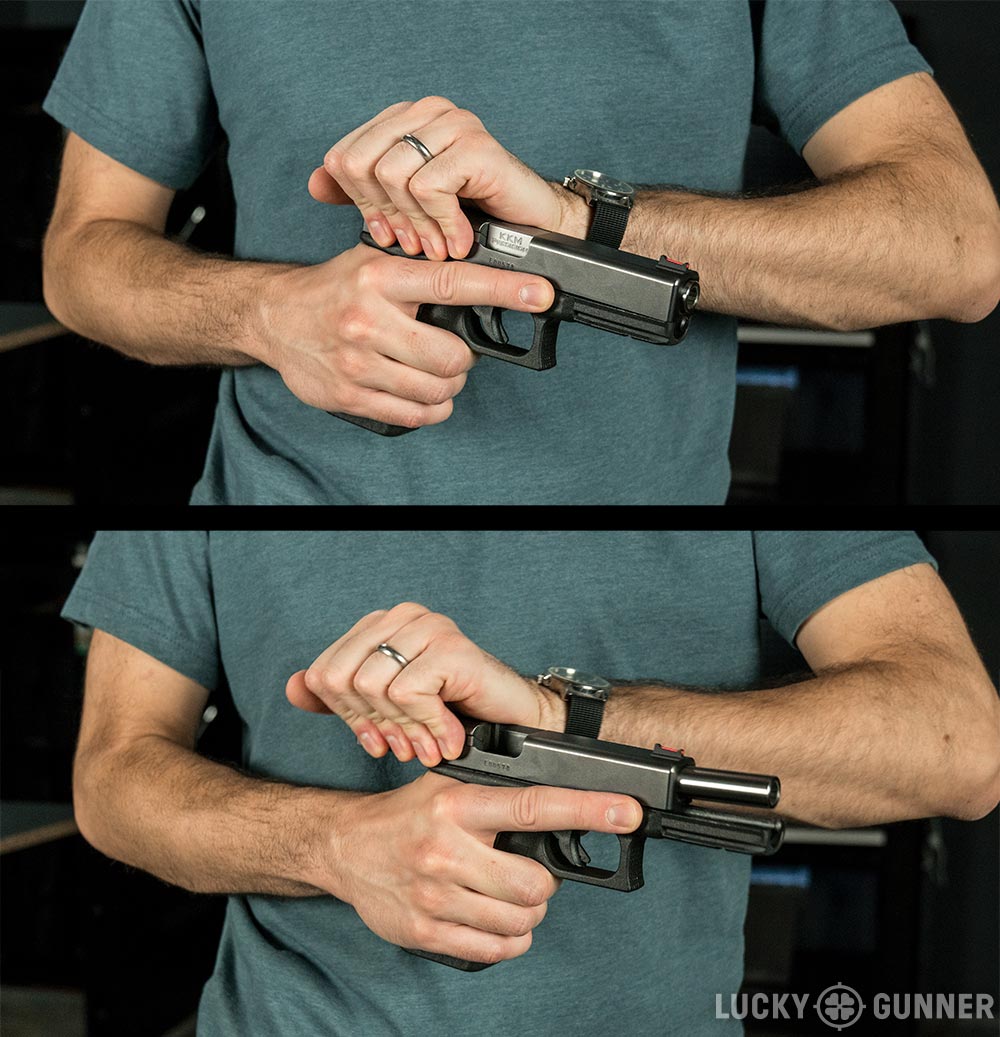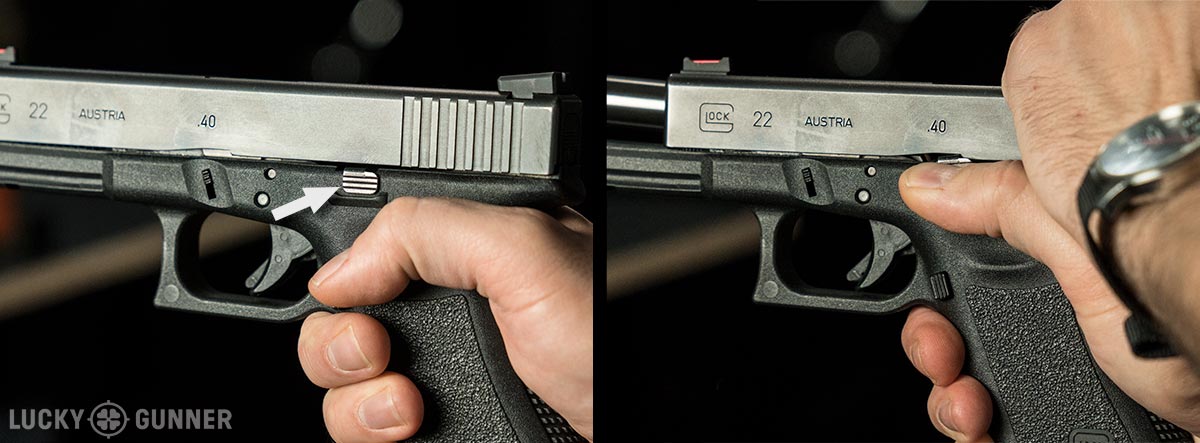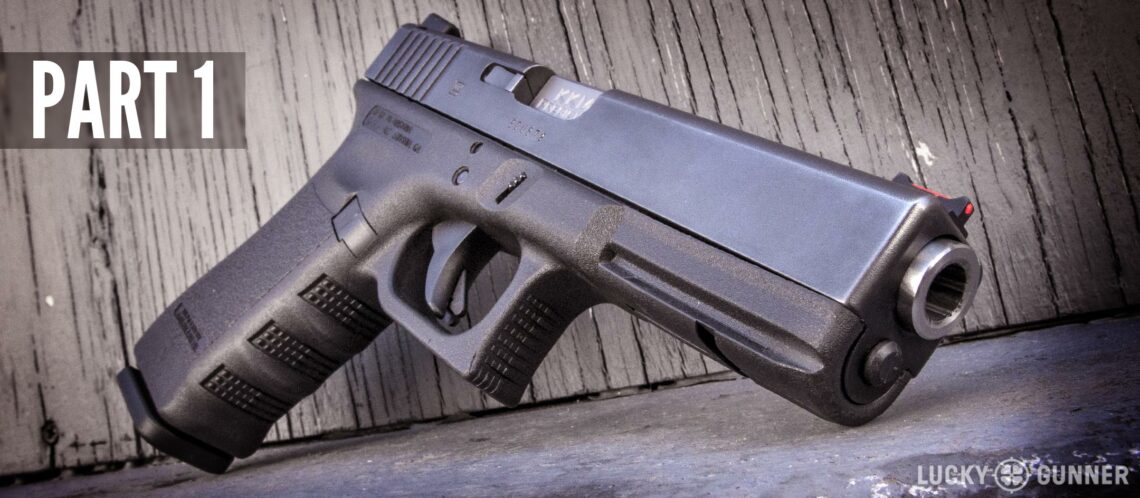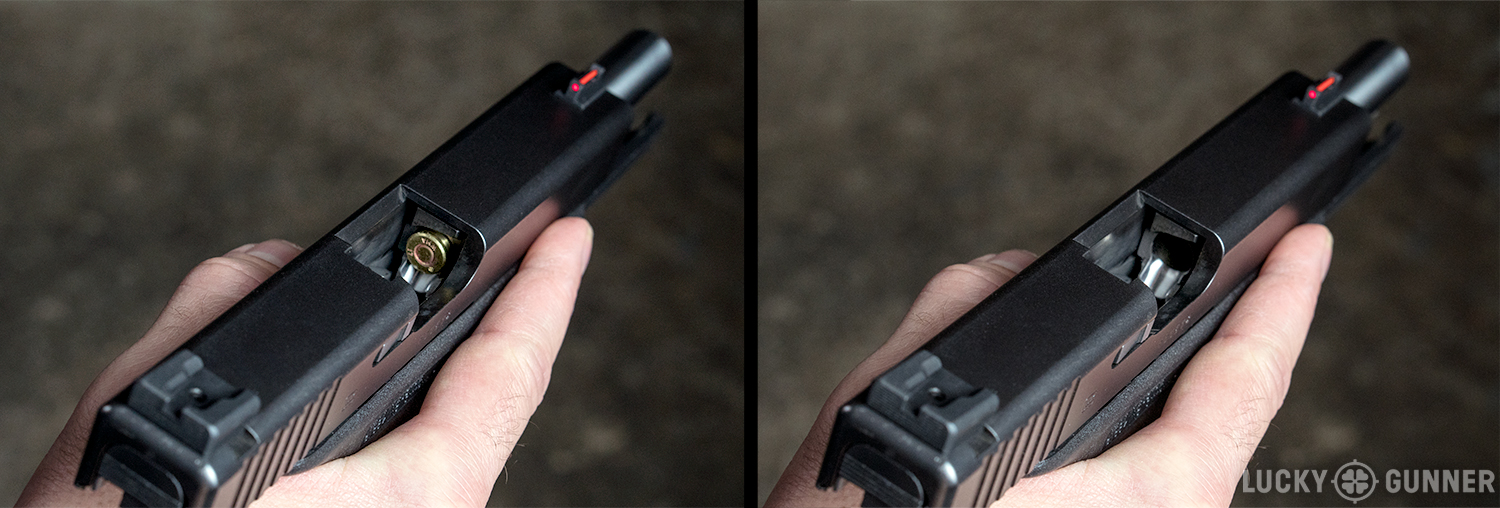Welcome to the second installment of our Shooting 101 series. We started off this series looking at how to use a revolver and today I am going to cover the absolute basics of semi-automatic pistols. Operating a semi-auto is a little more complicated than a revolver, so this one is going to come in two parts. Starting today with Part 1, I’m looking at how to load and unload the semi-auto. Part two will cover how to fire the semi-auto.
If you are just getting into shooting — maybe you just got your first gun or you’re thinking about getting one — this video is for you. This will not make you a great shooter and it’s definitely not a replacement for professional in-person training, which something I highly recommend that you pursue, but I’m going to try to help you get going in the right direction. You’re going to learn how to make the gun work and how to minimize the risk of having some kind of accident.
As is usually the case with hands-on instructional material, a lot of this information is easiest to explain through video, which we’ve embeded below. If you’d rather digest the info in text-form, the transcript appears below the video, with a few points slightly modified to make up for what’s lost in translation from moving pictures to the written word.
Rules for Safe Gun Handling
If you’re a new gun owner, we need to start by talking about safety. Handling firearms is an inherently dangerous activity. Every time you pick up a gun, you are making life and death decisions. That’s something we can’t ever forget. Fortunately, we can mitigate a lot of that risk by following the four basic rules of safe gun handling. You might hear these worded in a number of different ways, but I’ll give you my summary:
- Treat all guns the same way you would treat a loaded gun.
You cannot ignore the other three rules just because you believe a gun is unloaded. - Always keep the gun pointed in a safe direction.
That means, if it were to fire, it’s not going to hurt anyone and it’s not going to damage anything you can’t afford to replace. - Keep your finger away from the trigger until you are ready to shoot something.
Pretty straightforward, but that’s the one people seem to have the most trouble remembering. - Know what it is you are shooting at and what is behind it.
That goes for the shooting range or anywhere else you might need to use your gun.
There’s a lot more to using a gun safely than just the four rules, but if you follow them, you greatly reduce your chance of unintentionally hurting yourself or someone else.
There are multiple ways to do just about everything I’m about to show you. These aren’t necessarily the correct or only methods for handling and operating the gun, but I’ve tried to choose techniques that are easy to learn and easy to perform safely. Also, keep in mind that there are many different types of semi-automatic pistols. I would be here all day if I covered all of them, so I’m going to be making some generalizations based on how the most common pistols work. I always recommend you look over the owner’s manual for your gun to find any details that might be unique to your specific model.
How to Clear a Semi-Auto
Whenever we handle a semi-automatic pistol, the absolute first thing we need to do is clear it. That means we’re going to check and see if it’s loaded, and if it is, we will unload it.
Start by removing the magazine. The magazine release is usually located behind the trigger guard on the left side of the gun, but it might also be on the right side. The most common type of magazine release works like a button. While holding the grip in your dominant hand, press the mag release inward with your thumb, if you can reach it. If not, you can use the thumb on your non-dominant hand. The magazine will fall from the bottom of the grip. If you’re left handed and the mag release is on the left side, you can press it with your left index finger or middle finger.
Once the magazine is out, set it aside. Now you need to check and see if there’s a round of ammunition in the chamber, and to do that you need to lock open the slide. The slide is the top half of the pistol that slides back and forth when you shoot. It can be difficult open the slide, especially if you don’t have a lot of hand strength, and it tends to be even more difficult with small pistols. So we’re going to use a specific technique to open it.
While holding the grip in your dominant hand with the gun pointed in a safe direction and your index finger up on the frame away from the trigger, bring the gun in close to your body down around your abdomen. With your other hand, place your palm on the rear portion of the slide that’s facing your body. Wrap your fingers over the top and grab the other side with your fingertips. There are usually some serrations on the rear portion of the slide to help you get a good grip. Make sure all of your fingers are clear of the opening on the slide. That’s the ejection port and you can pinch your fingers if you aren’t careful. Instead of pulling the slide back, think about pushing the gun forward. Hold on to the slide firmly with your non-dominant hand and with the hand that’s on the grip, quickly punch the gun forward. Some people find it helpful to point it at a downward angle to get even more leverage on it.

But let me pause right there. Remember, I said you need to lock the slide open. You need to get a good look at the chamber without your hand being in the way and you don’t want to have to hold the slide open. So, while you are opening the slide, use your thumb to push up on the slide stop — that’s a little tab or lever located at the top of the frame, typically in the area where your thumb naturally rests. When you put upward pressure on that, it will slip into a little notch in the slide and lock it open.

You can also lock the slide open by inserting an empty magazine before you rack it. The empty mag will activate the slide stop and lock it open.
If there was a round in the chamber, it should eject when you open the slide, but you still need to check and make sure. Look inside the ejection port at the chamber (which is really just the rear-most end of the barrel). Verify that there is no cartridge there. If there is, it will look something like the photo below on the left, but you want to see an empty chamber like the one pictured on the right.
Now that you have cleared the gun, you’re ready to do whatever else you need to do: clean it, put it away, or in this case, load it. To do that, leave the slide locked open and set the gun aside so you can move your attention to the magazine.
How to Load A Semi-Auto
The easiest way to go about loading the magazine (at least until you get the hang of it) is to hold it with your non-dominant hand and brace the bottom against a hard, flat surface. The magazine will sit at an angle. If you’re holding the mag with your left hand, it should be leaning inward to your right, or leaning to your left if you’re holding it with your right hand. Pick up a cartridge with the hand that’s not on the magazine. Use the base of the cartridge to push down on the follower (that’s the thing inside the magazine that moves down when you push on it). As soon as the cartridge is down low enough, push it beneath the feed lips and make sure it slides all the way back until it stops against the magazine body. Take the next round and do the same thing, except you’ll be pushing down on the front of the first cartridge instead of the follower.
The more rounds you load into the magazine, the greater the spring tension will be and the harder it will become to squeeze each round in. Brand new magazines can be especially tight. If you’re just loading it up to shoot at the range, you certainly don’t have to fill the magazine to its full capacity. For example, if I’m using a 17-round magazine, I might only load 10 rounds in it at the range just to save myself the trouble. If you don’t like wrestling with magazines, you can always buy a magazine loading tool that will make the process much easier.
Once you’ve got the magazine loaded with as many rounds as you intend to fire, slide it into the magazine well in the grip of your pistol until it locks in place. Grab the rear of the slide overhanded the same way you did when you cleared the pistol. Pull the slide back slightly (or push the frame forward slightly) and then let go. Make sure you don’t slow down the movement of the slide in any way. It needs to move forward under the full force of the spring tension. You don’t want to “ride” it forward slowly, or the slide might not close all the way and the gun won’t fire.
When the slide closes, it picks up a round from the magazine and loads it into the chamber. The gun will not fire unless there is a round in the chamber. Keep this in mind if you ever want to load the gun when slide is already closed. After you insert the magazine, the gun is not yet ready to fire. You would have to rack the slide completely to the rear and release it. The slide would chamber a round from the magazine and only then would it be ready to fire.
Once the magazine is in and a round has been chambered, there may be some other steps to perform depending on what type of pistol you have. The most common semi-autos today are polymer framed striker fired pistols like the Glock in the demo photos in this post. If you have a gun like this, there are no additional steps. The gun is ready to be fired. If your gun has a manual safety, you should flip that on after you load it. If you’ve got a decocking lever, this is when you should decock the gun. And if you have no idea what those things are, you should read part two where I will go into more details on the different pistol types.
How to Unload A Semi-Auto
If you need to unload the gun, just follow the same procedure you used for clearing it. Take out the magazine, and lock the slide open. Check the chamber and make sure the round has been ejected. If you’re putting the gun away, you can close the slide at this point. Unlike the technique used for loading the gun, when the pistol is empty, you do want to ease the slide forward. It is generally not good for the gun to slam closed on an empty chamber. Keep the muzzle pointed in a safe direction and lock it up somewhere away from anyone who’s not supposed to use it.
In part two, we are going to take a quick look at how to fire a semi-automatic. When you get to that point and you’re ready to take your new gun out to the range, keep in mind you can order your ammo from us at Lucky Gunner and have it shipped straight to your front door!



